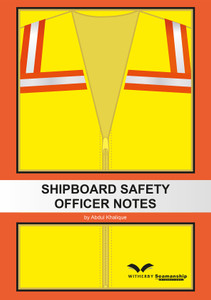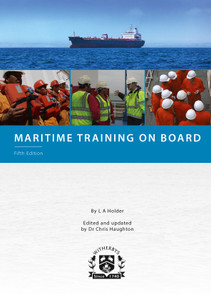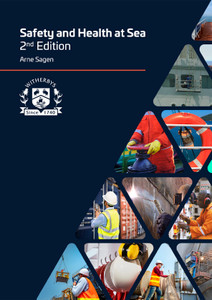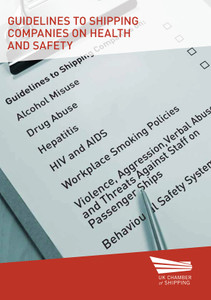
Safe Transport of Containers by Sea - Guidelines on Best Practices
This ICS/WSC publication sets out best practices for the safe transportation of containers. It discusses container design and stuffing, marine terminal operations, the responsibilities of ship operators and their crews, booking and assignment of cargoes and arrangements for stowage planning. The book is accompanied by a CD version with a search function.
This publication focuses on safety at every stage of the container transport chain. Particular emphasis is given to international regulations, container maintenance and inspection, correct packing, labelling and weighing of cargoes (including dangerous goods) when they are stuffed into containers, safe handling and stowage of containers when loaded on board, planning and computer systems used in container stowage.
The primary responsibility for the safe carriage of containers at sea rests with the ship operator, both the shore based management and the seafarers serving on board. However, there are many other parties in the transport chain concerned with the movement of containers. There are those employed by shipping lines involved with the booking and assignment of cargoes, and the subsequent arrangements for stowage planning; and there are the freight forwarders, ports and terminal operators and – particularly important – the shippers, from whom the cargo originates. All of these parties have vital and unavoidable responsibilities towards the safety of ships on board which containers are transported and towards the cargo itself.
These responsibilities concern the correct packing, labelling and weighing of cargoes when they are stuffed into containers, the accurate and proper declaration of the goods by the cargo interests, and the safe handling and stowage of these containers when they are received by a port facility and loaded on board a ship, the latter requiring complex planning, calculations, and the use of sophisticated computer systems. There is also the maintenance and inspection of the containers themselves. All of these activities have a direct bearing on the safety of ships and the reduction of the risks to the lives of ships’ crews and other personnel in the transport chain.
The oceans in which containerships operate present a very challenging physical environment, and the pressures and forces exerted on a ship, particularly in heavy weather, may not always be readily appreciated by those who may not have experienced a voyage at sea.
It is especially important to stress the dangers that can arise from containers being overloaded, weights being wrongly declared, or containers being improperly stowed and secured. The results can cause damage to the ship or other containers on board. Apart from the dangers of heavy container stacks collapsing, such practices can have a serious effect on the stability and structural integrity of ships as a whole, potentially placing all those on board in considerable danger.
The dangers of poor stowage and/or incorrect labelling of Dangerous Goods are also difficult to over emphasise. As well as presenting a serious threat to the health and safety of personnel, the unsafe carriage of Dangerous Goods can result in one of the worst eventualities with which seafarers can ever be confronted – a fire or explosion on board.
Notwithstanding the hazards that can exist at sea, the safety record of shipping is very impressive and has improved considerably during the last 20 years. However, when dangerous incidents still occur, the root cause is usually a failure to comply with existing international legislation or to adhere to established industry procedures.
The best practices in this Guide are therefore intended to cover the various parts of the transport chain that have an impact on the safe movement of containers by sea. The following chapters represent a distillation of the good practices that are already undertaken by the vast majority of responsible companies in the industry, but they have been consolidated in one place to provide a useful resource that should be of benefit to all concerned with the safe transportation of containers.
Because the different chapters are directed at slightly different audiences, there is inevitably a degree of repetition with regard to some of the advice. However, it is suggested that the entire contents of this Guide should be digested by all concerned with the movement of containers, in the interests of understanding the procedures that should be followed in those other parts of the transport chain in which the reader may not otherwise be directly engaged.
1. INTRODUCTION
2. REGULATIONS GOVERNING TRANSPORT OF CONTAINERS
2.1 Overview
2.2 International Maritime Organization (IMO) Instruments
2.3 Other International Instruments Relevant to the Transport of Containers
3. CONTAINERS
3.1 Overview
3.2 Container Design and Construction
3.3 Responsibilities for Examination and Plating
3.4 CSC Examination Policy
3.5 Maintenance
3.6 Repair Standards
3.7 Preparation for Cargo
3.8 Operating Guidance for Refrigerated Containers
3.9 Tank Container Test Intervals
4. BOOKING AND ASSIGNMENT
4.1 Overview
4.2 Practical Constraints
4.3 Operational Recommendations
5. SHIPPING LINE STOWAGE CO-ORDINATION
5.1 Overview
5.2 Acceptance of Containers and Exceptional Cargoes
5.3 Planning Container Stowage On Board
5.4 Guidelines for Confirming Proper Loading of Ship
5.5 Ship Stowage Planning Basic Flow
6. CONTAINER STUFFING
6.1 Overview
6.2 Key Requirements
6.3 Checking the Container
6.4 General Stowage
6.5 Safety and Securing
6.6 Placarding for Dangerous Goods
7. MARINE TERMINAL OPERATIONS
7.1 Overview
7.2 Shipper’s Booking
7.3 Berth Assignment
7.4 Cargo Cut-Off
7.5 Safety and Security Checks Prior to Entry
7.6 Export Yard
7.7 Stowage Instruction
7.8 Crane Sequencing
7.9 Ship/Shore Communication
7.10 Arrival Condition
7.11 Implementing the Loading Plan
7.12 Discharging
7.13 Loading
7.14 Container Lashing
7.15 Prior to Departure
7.16 Transhipment Containers
8. RESPONSIBILITIES OF THE MASTER AND CREW
8.1 Overview
8.2 Prior to Arrival at Way Port
8.3 During Stay at Way Port
8.4 After Departure from Way Port
9. INFORMATION TECHNOLOGY
9.1 Overview
9.2 Computer Systems Used in Container Stowage
9.3 Designing and Enforcing Effective Business Processes
9.4 Ensuring Data Quality
9.5 Use of Good IT Tools
Annexes
Annex A – ISO Standards Relating to Containers
Annex B – Serious Structural Deficiencies in Containers
Annex C – Model Stowage Co-ordinator Flow Checklist
Annex D – Visibility Requirements for Containerships Under SOLAS
Annex E – Authoritative Sources of Stowage Data
Appendices
Appendix A – Future Developments
Appendix B – Domestic and Intermodal Transport
ICS
The International Chamber of Shipping (ICS) is the principal international trade association for the shipping industry, representing shipowners and operators in all sectors and trades.
ICS membership comprises national shipowners’ associations in Asia, Europe and the Americas whose member shipping companies operate over 80% of the world’s merchant tonnage.
Established in 1921, ICS is concerned with all technical, legal, employment affairs and policy issues that may affect international shipping.
ICS represents shipowners with the various intergovernmental regulatory bodies that impact on shipping, including the International Maritime Organization.
ICS also develops best practices and guidance, including a wide range of publications and free resources that are used by ship operators globally.
https://www.ics-shipping.org/about-ics/about-ics
World Shipping Council
The World Shipping Council’s goal is to provide a coordinated voice for the liner shipping industry in its work with policymakers and other industry groups with an interest in international transportation.
The WSC and its member companies partner with governments and other stakeholders to collaborate on actionable solutions for some of the world’s most challenging transportation problems. In particular, the WSC plays an active role in the development of programs that improve maritime security without impeding the free flow of commerce.
Additionally, the World Shipping Council and its member companies are working to promote sound environmental stewardship through new international standards for ships and achievement of reduced air emissions, including carbon dioxide. Other areas of interest include establishment of a new international convention on cargo liability; enhanced customs information; and international technology standards for containers. In recognition that a modern and efficient transportation infrastructure is critical to economic growth, the WSC also routinely works with a broad range of stakeholders from the public and private sectors to advance policies and programs that will ensure adequate and efficient global transportation infrastructure capacity.
- Number of Pages:
- 80
- ISBN:
- 9781838078454
- Published Date:
- January 2008
- Book Height:
- 0 mm
- Book Width:
- 0 mm
- Author:
International Chamber of Shipping
- Publication Date:
- January 2008





